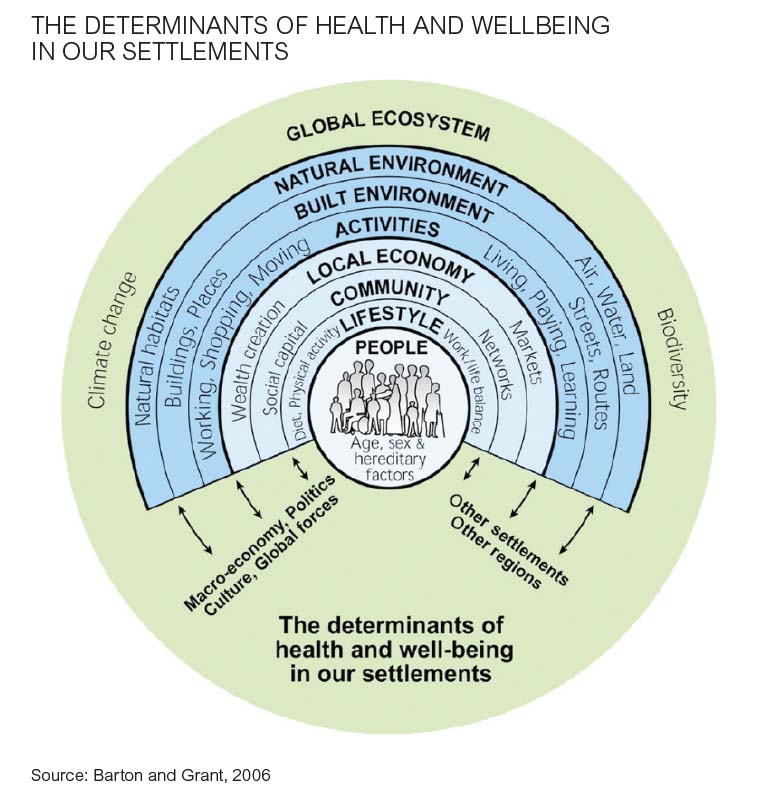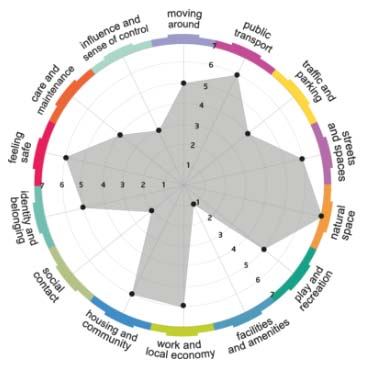Five takeaways from Health in All Policies 2019
Prevention is better than cure’ is a truth universally acknowledged and one that has recently taken centre stage in UK health policymaking. The extent to which we can prevent poor health depends on influencing the wider determinants of health and wellbeing, neatly summarised here… 
Many of these determinants are within the control of local authorities, underlining the case for a ‘Health in All Policies’ (HiAP) approach which: ‘systematically and explicitly takes into account the health implications of the decisions we make; targets the key social determinants of health; looks for synergies between health and other core objectives and work we do with partners; and tries to avoid causing harm with the aim of improving the health of the population and reducing inequity.’ The recent HiAP 2019 conference at the Royal Society of Medicine sought to identify those synergies. I spoke at HiAP 2019 about the connections between transport and health and the opportunities for collaboration between the two sectors. You can read my presentation here.
Here are five things I took away from the day:
1. Give up power Throughout the conference was a recognition that, to achieve HiAP, health – and other professionals – need to be willing to give up some power and, where possible, some funding. That might include, for example, the health sector giving up some power to enable other sectors – such as transport, housing, playwork – to tackle the wider determinants of health. It might also include professionals recognising that the amenities, services and places we design must work for the people and communities that we want to see using them. That means co-design, listening and acting on what communities say they need rather than what we think they should have.
2. Social participation is vital for good health Dr Piroska Ostlin of the World Health Organisation talked about social participation as a key means for, and goal of, health equity. If we ask and act on what communities say they need (which itself is social participation) they are more likely to get out of the house and use it once it is delivered– whether that’s an attractive, well-cared for green space in the neighbourhood or a new bus service. Good public transport, walking and cycling have a vital role in linking people to each other and to opportunities to participate.
3. Place-based, not service-based In line with HiAP, health policy is increasingly looking to intervene at the level of place rather than individual health services. How can we design our places and provide the amenities required to promote health and wellbeing? This plays directly into our Year of Action on Healthy Streets – an approach that seeks to put people and their health at the heart of the way we design individual streets. At HiAP 2019 I learnt about other models and frameworks that can help us think about how whole places can be designed with health in mind including the TCPA’s 6 elements of healthy places and Scotland’s Place Standard, pictured below. How people travel and move around a place is a central consideration in both frameworks. 
4. These places are already putting HiAP… Wales: The Well-being of Future Generations (Wales) Act requires public bodies to think about the long-term impact of their decisions, to work better with people, communities and each other, and to prevent persistent problems such as poverty, health inequalities and climate change. Norway: Government departments and politicians have a mandatory obligation to take account of health in all policy decisions. New Zealand: The forthcoming 2019 Budget will place wellbeing, kindness and compassion at its heart. For the first time, alongside GDP, it will measure performance against five key priorities aimed at improving New Zealanders' quality of life including: supporting mental health; improving child wellbeing; and creating opportunities. Any Minister wanting to spend money must prove it will improve inter-generational wellbeing.
5. Watch out for these… A raft of new publications and resources are due in summer:
- The Department for Health and Social Care’s Green Paper on prevention.
- Public Health England’s Joint Strategic Framework for Health Inequalities (working title). A live, modular resource, the Framework is intended to provide a structure and vision for people working at local level on place-based action to tackle health inequalities.
- The Health Foundation’s HiAP case studies collection.
For more on the connections between transport and health as well as tools to foster collaboration take a look at our Health and Wellbeing Hub. Rebecca Fuller

